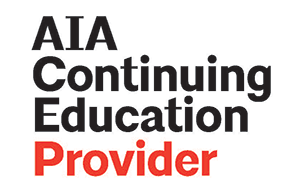 | 1 LU |
 | 1 LU |
COVID-19 has resurfaced long-standing problems in our country, including socioeconomic disenfranchisement and the dangerous effects of climate change. Both of these crises have had tremendous impacts on students to date, including the loss of extra-educational resources. Not only did students lose in-person teaching but many, along with their families, lost access to food, shelter, healthcare, and essential mental and behavioral services. We believe that K-12 schools that adopt community school models, “community schools”, will be at the heart of the solution going forward. A community school is “both a place and a set of partnerships between the school and other community resources” that we believe can serve as anchors to make our communities more resilient toward future disruptions. Perkins Eastman, in partnership with Drexel University’s School of Education, is studying how to design “community schools” to maximize their impact not only student performance and well-being, but community resiliency and wellness as a whole. Expanding our initial ideas of “success” in education, community schools rework a rigid emphasis on academic performance and grades. With an “integrated focus on academics, health and social services, youth and community development” they “lead to improved student learning, stronger families, and healthier communities.” Building upon a series of interviews with school administrators, teachers, community school coordinators, parents and district leadership, research, surveys, and roundtables with leading educators, our presentation will share our findings and design ideas for helping schools and educators further advance the concept of community schooling. These guidelines will be discussed within a broader context of the positive changes these schools can help make on education and communities in the present, and the factors that make them resilient for the future.
Learning Objectives:
Rebecca Milne, LEED GA, Director of Design Strategy, Perkins Eastman Architects
Rebecca is the Director of Design Strategy at Perkins Eastman. Her background in neuropsychology and architecture informs her research and design, which focuses on the connection between architecture and the human experience. Her strategic approach applies design thinking through a futurist, human-centric lens to find innovative solutions that build resilience, create value, and maximize growth. As a published researcher, Rebecca has pioneered several studies examining collaboration and individualization in workplace, healthcare, and education environments.
Sean O'Donnell FAIA, LEED AP, Principal & K-12 Practice Area Leader, Perkins Eastman Architects
Sean is the practice area leader for Perkins Eastman’s international K12 practice. A recognized leader in educational facility planning and design, he is the Co-Director of the Consortium for Design and Education Outcomes (CDEO), a research partnership with Drexel University’s School of Education, authored articles and spoken internationally--his projects have won more than 30 design awards. Deeply committed to sustainable school design, he serves on the Board for the Collaborative for High Performance Schools.
Bruce Levine J.D., Associate Clinical Professor, Drexel University
Bruce is an Associate Clinical Professor at Drexel University’s School of Education, where he serves as the Director of the Educational Policy program, and the M.S. degree in Education Improvement and Transformation. His current research interests includes exploration of community school models in US education; civic and information literacy, education law, especially legal implications of education technology; and the relationship between the educational enterprise and workforce development.